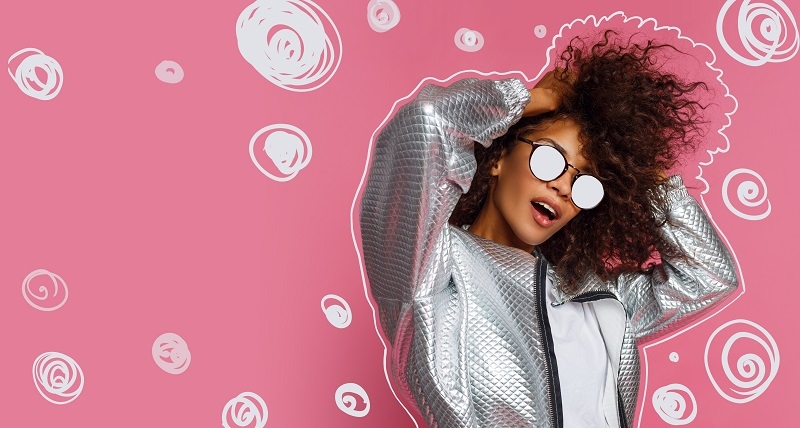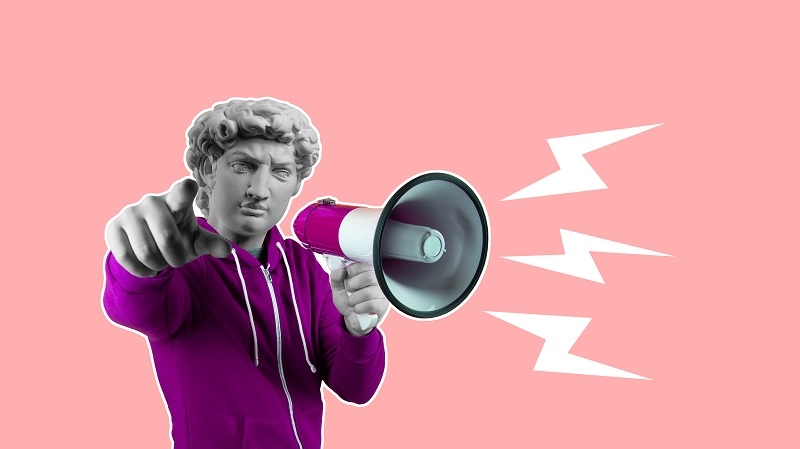
Egyptian hairstyles, in particular, have heavily inspired modern pop culture, from fashion runways to Hollywood films. The wigs, braids, bobs, and headpieces of ancient Egyptian dress weren’t simply to be glamorous, but they carried broader cultural, social, and sexual meanings.
Now, the ancient Egyptian hair practices persist, inspiring hairstylists and celebrities, as well as designers, to create modern-day looks, making the Egyptian hairstyle's relevance and impact undeniable.
From Cleopatra’s sleek bob to the ornate braided hairstyles favored by Egyptian royals, these ancient Egyptian hairstyles influence widely and have been interpreted in music videos, red-carpet looks, and high-fashion editorials. While revivals of ancient trends from years past continue to be the case in pop culture and beyond, Egyptian hairstyles provide an evergreen source of hair inspiration for fashion today.
Hairstyles in Ancient Egypt were more than just aesthetics; they represented identity, rank, and beliefs. Men and women took great pride in their hair, which often wore wigs, braids, and accessories that indicated their social position. Egyptian hairstyles have undergone many changes that have influenced beauty and fashion and have developed throughout generations. Modern adaptations of such styles can be found in the present media.
One of the most iconic ancient trends was the blunt bob, associated with Cleopatra herself. Even now, this sleek, structured haircut has become a signature of modern style, thanks in part to its visibility on the catwalks of haute couture shows and as a common proposition in celebrity makeovers. Moreover, the use of ornate beads, gold accents, and complex braiding patterns, which were prevalent in Egyptian hairstyling, continue to inspire modern hair trends, especially within pop culture.
Also Read: Ancient Egyptian Curling Tongs Beauty Secrets Unveiled
In ancient Egypt, hairstyles were more than just a matter of personal preference — they were closely tied to societal status and religious belief. The elite would wear wigs styled from human hair, and lower social classes used plant fibers or wool to create a similar look. Sculpted wigs were not ornate or simply fashionable but practical solutions to protection from the burning desert sun.
Modern beauty trends owe a great debt of inspiration to the elegant and structured hairstyles of ancient Egyptian women. In fact, these protective hairstyles still trace their roots back to ancient beauty practices - many popular styles today, such as box braids and cornrows, can be traced back to artwork seen in Egypt. Others, which were meant to protect the hair from wear and tear, show up in the modern-day versions of hairstyles that continue to inspire hair looks today.
Ancient Egypt had very sophisticated and luxurious beauty standards. These principles of beauty were extreme, and historical beauty was defined by symmetry, precision, and the use of embellishing elements like hairpins, gemstones, and scents. Even taking subject matter, much of these ancient burgeoning trends have flowed comfortably into contemporary pop culture, inspiring everything from hair-styling methods and red carpet looks.
The influence of Egyptian hairstyles can be seen throughout pop culture, with one of the most notable examples being the use of embellished wigs and luxurious headdresses in the entertainment realm. Musicians, actors and models often reference Egyptian aesthetics in their public appearances and the appearance of ancient hairstyles directly.
The hairstyles of ancient Egyptians were more than just something to look good: they were an expression of oneself, a statement of personal identity. The braiding and elaborate styling represented the social status of the person, and these practices are still inspiring hairstylists today.
Here are some of the most iconic beauty trends from ancient Egypt:
The Cleopatra Bob: A structured, chin-length cut that continues to be a classic of modern fashion.
Intricate Braids: Used in tomb paintings and carvings, these styles inspire modern-day protective styles.
Braids division Wigs & Extensions: This ancient practice is still very important for hairstylists and celebrities at some point in their lives.
These markers of historical beauty have been rediscovered by pop culture, affirming the idea that ancient fashion trends never really fade away.

Various aspects of pop culture, including film, music, and social media trends, are influenced by Egyptian hairstyles. Hollywood has a long history of romanticizing ancient Egypt, often bringing its signature hairstyles to the big screen in blockbuster films. Movies like the Elizabeth Taylor-starring Cleopatra (1963) and The Mummy franchise have re-introduced Egyptian aesthetics to new generations and kept historical beauty at the front of consciousness.
Outside of the world of film, the music industry has taken up the Egyptian hair baton too. Others are artists who have worn Egyptian-inspired hairstyles of their own during performances and in music videos, such as Beyoncé, Rihanna, and Katy Perry. Be it by stylized braided wigs or other ornate gold headpieces. These A-listers pay tribute to the beauty of the past while keeping ancient trends alive in modern culture.
High-end designers love to hark back to ancient hairstyling, too, and send their runways to walk in sleek, constructed styles that remind them of the ideal forms of paleo beauty. The metallic hair accessories, braided crowns, and sculpted halos of hair continue to be a nod to the beauty of all things Egyptian.
The beauty world has followed suit with editorial shoots and social media trends inspired by Egyptian hairstyles. Contemporary hairstylists and beauty influencers replicate the Egyptian look, showing that ancient beauty practices live on in the culture.
Trendy fashion is circular in nature, with old styles reinvigorated by new fads. Hairstyles from Egypt, specifically, have made a comeback as of late, with designers and influencers alike celebrating the elegance of antiquarian beauty.
Many traditional Egyptian hairstyling techniques have also been modernized for current tastes. Some examples include:
Sleek Bobs With a Twist: The Cleopatra bob has long been a classic haircut, but hair pros have adapted it with sharp angles and textured layers to bring a modern sensibility to the field.
Protective Styles with Cultural Significance: Styles from Fulani braids to cornrows, many modern braiding styles have counterparts in ancient Egyptian braiding patterns.
Golden and beaded hairbands: These golden accessories were worn by Egyptian royalty and are now a must-have at music festivals and high-fashion events.
Wigs and Hair Extensions: While wigs were originally used in ancient Egypt for practicality as well as beauty, they are still one of the biggest trends in the beauty industry.
Also Suggested: Ancient Egyptian Hair Secrets Tied to the Stars Above
As pop culture becomes more and more aware of its ancient influences, who said looks that took fashion to the catwalk are beyond reach? From the big screen to the soundtrack to high fashion, these age-old beauty practices will never make a sad hair story.
These heirloom standards of beauty are resurfacing in pop culture today as Egyptian styles are influencing fashion in the modern day and keeping the legacy alive in the hairstyling industry today. Women like Nefertiti, Hatshepsut, or Cleopatra were famed for their pretty faces and mysterious aesthetics, enriched with braids, headpieces, and wigs.
There is no denying the influence of Egyptian hairstyles on modern pop culture. Ancient references, from pinned and braided wigs to ornate updos, are a constant source of historical beauty ideals, translating to hair inspiration from the runway to the red carpet to the hairstylists.
Hair and makeup are a form of art but also a huge part of a culture, and while modern fashion keeps changing, the influence of Egyptian hairstyles is strongly staying here. Apparently, these styles will never go out.
This content was created by AI